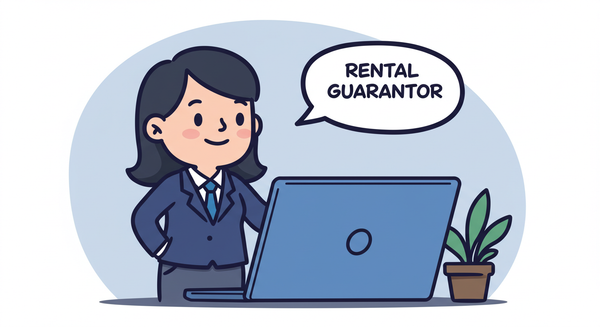Yes, Renters Pay Property Tax – Here's How
This comprehensive guide clarifies who pays what, when exceptions occur, and how savvy property owners can leverage tax strategies for maximum benefit.

Shocking Reality: The average American homeowner pays $3,719 annually in property taxes, but here's what many landlords don't realize - these taxes can actually become a powerful wealth-building tool through strategic depreciation deductions that can save thousands each year. Moreover, research reveals that landlords can shift between 10-86% of property tax burdens to tenants depending on market conditions, making understanding these dynamics crucial for investment success.
Property tax responsibilities often create confusion between landlords and tenants.
This comprehensive guide clarifies who pays what, when exceptions occur, and how savvy property owners can leverage tax strategies for maximum benefit.
Key Takeaways:
- Property taxes are legally the landlord's responsibility in most situations
- Tax burden shifting ranges from 10-86% depending on market conditions
- Urban markets typically allow greater burden shifting than rural areas
- Short-term absorption (85-90%) gives way to long-term transfer (up to 100%)
- Property type significantly affects tax rates and shifting potential
- Depreciation provides substantial tax advantages for property owners
- State-by-state variations significantly impact investment strategies
- Technology solutions streamline tax management processes
- Strategic planning and professional guidance optimize tax outcomes
Understanding Property Taxes: The Foundation of Community Funding
Property taxes serve as the financial backbone of local communities. These mandatory payments fund essential services including schools, police departments, fire services, road maintenance, and public libraries. Local governments at municipal and county levels impose these taxes based on assessed property values.
The tax calculation process follows a systematic approach:
Assessment Phase: Local assessors evaluate each property's market value, typically every 1-5 years depending on jurisdiction requirements.
Rate Setting: Municipal authorities establish millage rates based on budgetary needs for public services and infrastructure.
Approval Process: City councils or voter referendums may be required to approve final tax rates.
Bill Calculation: Individual tax obligations are calculated by multiplying the assessed value by the established rate.
This system ensures property taxes align with local community needs while maintaining essential services that preserve neighborhood quality and property values.
Primary Responsibility: Landlords Bear the Legal Obligation
The fundamental rule: Property owners (landlords) hold legal responsibility for paying property taxes on their rental properties. This obligation cannot be transferred to tenants under standard residential lease agreements.
Tenants contribute indirectly through rental payments that landlords use to cover property expenses, including taxes. Smart landlords factor property tax costs into their rental pricing strategies to maintain profitability while meeting legal obligations.
State-by-State Variations in Property Tax Rates
Property tax rates vary significantly across states due to different funding structures and local government needs. Understanding these variations helps landlords calculate cap rates accurately when evaluating investment opportunities in different markets.
Highest Tax States:
- New Jersey: Average effective rate of 2.13%
- Illinois: Average effective rate of 2.05%
- New Hampshire: Average effective rate of 1.93%
Lowest Tax States:
- Hawaii: Average effective rate of 0.31%
- Alabama: Average effective rate of 0.41%
- Louisiana: Average effective rate of 0.56%
These variations impact investment strategies and rental pricing decisions across different markets.
Depreciation: The Landlord's Secret Wealth-Building Tool
Depreciation represents one of the most powerful tax advantages available to rental property owners. This accounting method allows landlords to recover costs associated with property wear and tear over time.
How Depreciation Works
The IRS permits property depreciation over specific timeframes:
- Residential properties: 27.5 years
- Commercial properties: 39 years
Important Note: Only the building structure qualifies for depreciation - land values cannot be depreciated since land doesn't experience wear and tear.
Practical Depreciation Example
Consider a residential rental property with a building value of $275,000 (excluding land):
- Annual depreciation deduction: $10,000 ($275,000 ÷ 27.5 years)
- This deduction reduces taxable income by $10,000 annually
- For landlords in the 24% tax bracket, this saves $2,400 per year in taxes
The Economics of Property Tax Shifting: How Much Do Tenants Really Pay?
Research reveals that tenants indirectly shoulder between 10-86% of property tax burdens through rental payments, with the percentage varying dramatically based on local market conditions. Understanding these shifting dynamics helps landlords optimize pricing strategies and predict market responses to tax changes.
Short-Term vs. Long-Term Tax Burden Transfer
Short-Term Reality (0-2 years): Landlords initially absorb most property tax increases because housing supply remains fixed and lease agreements prevent immediate rent adjustments. Research shows landlords typically bear 85-90% of new tax burden during this period.
Long-Term Equilibrium (3-5 years): Market forces enable landlords to shift nearly 100% of property tax costs to tenants in supply-constrained markets. German market studies demonstrate that real net rents return to pre-tax levels within five years, indicating complete burden transfer.
Property Tax Burden Shifting Timeline
How tax burden transfers from landlords to tenants over time
- Housing supply remains fixed
- Existing lease terms prevent immediate adjustments
- Landlords bear 85-90% of new tax burden
- Limited tenant resistance to small increases
- Lease renewal opportunities emerge
- Market rents begin reflecting tax costs
- Supply constraints limit tenant alternatives
- Regional variations become apparent
- Real net rents return to pre-tax levels
- Complete burden transfer in urban markets
- Rural markets may retain 40-50% burden
- New market equilibrium established
Market Factors Affecting Tax Burden Shifting
Housing Supply Elasticity: The most critical factor determining tax shifting success. Markets with limited new construction allow greater burden transfer, while areas with flexible housing supply limit landlords' pricing power.
Urban vs. Rural Dynamics:
- Urban Markets: High demand and limited supply enable landlords to shift full property tax burden to tenants
- Rural Markets: Abundant housing options force landlords to absorb most tax increases themselves
- Suburban Markets: Mixed results depending on local zoning and development restrictions
Competition Intensity: Markets with housing shortages and high tenant demand allow maximum tax burden shifting, while competitive markets with abundant rental options limit rent increase potential.
The Critical Distinction: Direct vs. Indirect Payment
Direct Payment: The Legal Reality
Residential Properties: Tenants should never receive property tax bills directly from government entities. If a landlord requests direct tax payments to government authorities, this represents a red flag requiring immediate attention as it may indicate inappropriate lease terms or potential fraud.
Warning Signs to Watch:
- Landlords requesting tenants pay taxes directly to municipalities
- Lease agreements that make tenants legally responsible for tax liens
- Situations where missed tenant payments could result in property liens
Indirect Payment: The Economic Truth
Universal Reality: All tenants effectively pay property taxes through rental rates, regardless of lease structure. Landlords incorporate tax costs into pricing strategies, meaning tenants bear the economic burden even without legal responsibility.
Market Impact Factors:
- High property tax areas typically show correspondingly higher rental rates
- Landlords' ability to pass costs varies based on local market conditions
- Competitive markets may limit landlords' ability to fully pass through tax increases
Exceptional Cases: When Tenants Pay Property Taxes
While rare in residential settings, specific circumstances require tenants to pay property taxes directly:
Commercial Lease Structures
Triple-Net Leases (NNN): Commercial tenants assume responsibility for:
- Property taxes
- Insurance premiums
- Maintenance costs
- Base rent
Net Lease Variations:
- Single Net (N): Tenant pays property taxes in addition to base rent
- Double Net (NN): Tenant covers property taxes and insurance
- Triple Net (NNN): Tenant responsible for taxes, insurance, and maintenance
Gross Leases: Landlords pay all property taxes but incorporate costs into higher base rent.
Prorated Arrangements: Multi-tenant buildings divide property taxes proportionally based on leased square footage. This concept is particularly relevant for duplex property management where tax allocation between units becomes a critical operational consideration.
Commercial Lease Structure Comparison
Understanding tenant vs. landlord responsibilities across different lease types
Pays All
- Base Rent
- Property Taxes
- Insurance
- Maintenance
Taxes
- Base Rent
- Property Taxes
- Insurance
- Maintenance
Taxes &
Insurance
- Base Rent
- Property Taxes
- Insurance
- Maintenance
All Costs
- Base Rent
- Property Taxes
- Insurance
- Maintenance
| Responsibility | Gross Lease | Single Net (N) | Double Net (NN) | Triple Net (NNN) |
|---|---|---|---|---|
| Base Rent | ✓ Tenant | ✓ Tenant | ✓ Tenant | ✓ Tenant |
| Property Taxes | ✗ Landlord | ✓ Tenant | ✓ Tenant | ✓ Tenant |
| Insurance | ✗ Landlord | ✗ Landlord | ✓ Tenant | ✓ Tenant |
| Maintenance | ✗ Landlord | ✗ Landlord | ✗ Landlord | ✓ Tenant |
| Predictable Costs | ✓ High | ✗ Moderate | ✗ Low | ✗ Very Low |
Specialized Lease Agreements
Some commercial lease negotiations include property tax responsibilities for tenants. These arrangements require careful legal documentation and clear communication of obligations.
HOA-Governed Properties
Properties within homeowners associations may include property tax costs in HOA fees. Landlords often pass these expenses to tenants through higher rental rates rather than direct tax payments.
Technology Integration in Property Tax Management
Modern property management software solutions streamline tax-related responsibilities:
Automated Reminders: Calendar features track tax due dates and prevent late payment penalties.
Expense Tracking: Digital platforms categorize tax payments for simplified record-keeping.
Tax Preparation Reports: Automated reporting systems generate documentation for tax filing purposes.
Assessment Monitoring: Some platforms provide alerts for property reassessments that could impact tax obligations.
Regional Case Study: Texas Property Tax Dynamics
Texas provides an excellent example of property tax economics in action, representing one of the most landlord-favorable tax shifting environments in the nation.
Texas-Specific Factors:
- No state income tax increases reliance on property taxes (1.8% to 2.5% effective rates)
- Property taxes represent approximately 20% of every rent dollar paid by tenants
- Rental properties receive no protection from annual assessment increases
- Local municipalities heavily depend on property tax revenue
- Market competition affects landlords' ability to pass through tax increases
Key Statistics:
- Average property tax burden shifting: 70-85% in major metropolitan areas
- Rural Texas markets: 40-60% shifting due to housing abundance
- Assessment lag time: Typically based on previous year's market data, creating delayed impacts
- Texas commercial properties: Often structured as net leases with direct tenant tax responsibility
Regional Comparison:
- Texas: High commercial tax rates (1.83% average), extensive use of NNN leases
- California: Strong rent control limits tax pass-through despite rising assessments
- Florida: Generous homestead exemptions for owners but no protection for rental properties
This model demonstrates how regional tax policies directly impact rental market dynamics and investment strategies, with Texas landlords enjoying greater ability to shift tax burdens compared to most other states.
Tenant Income Impact on Tax Burden Distribution
Counterintuitive Finding: Lower-income renters often face higher effective property tax burdens because they typically occupy properties with higher tax rates relative to value. However, lifetime analysis shows this regressivity substantially decreases when viewed over longer time periods rather than annual snapshots.
Income-Based Tax Burden Patterns:
- Low-Income Tenants: Higher effective rates due to property type and location
- Middle-Income Tenants: Moderate burden shifting, more housing options
- High-Income Tenants: Lower effective rates, premium properties often have tax advantages
Understanding tenant credit score ranges and financial capacity helps landlords assess their market's ability to absorb property tax-related rent increases.
Housing Affordability Crisis Effects
The broader housing shortage significantly affects property tax incidence by limiting tenant mobility and choice. When affordable housing is scarce, tenants have fewer options to avoid high-tax areas, enabling landlords to pass through larger portions of their tax burden. This creates a compounding effect where housing scarcity increases both rents and the proportion of property taxes tenants effectively pay.
Preparing for Property Tax Increases
Strategic Timing Considerations: Property tax assessments often lag behind current market conditions, creating opportunities for informed landlords. In markets like Texas, assessments typically use previous year's data, meaning current rental rate increases may not be reflected in tax assessments until the following year.
Rent Adjustment Strategy Framework:
Immediate Response Properties (Commercial):
- Implement pass-through provisions in all new leases
- Monitor assessment cycles for proactive tenant communication
- File administrative petitions promptly to minimize delays
- Build retroactive adjustment expectations into tenant relationships
Delayed Response Properties (Residential):
- Time lease renewals strategically around tax assessment periods
- Communicate property tax increases 90-120 days before lease renewal
- Consider gradual annual increases vs. accumulated larger adjustments
- Monitor local market absorption rates for competitive positioning
Market Condition Analysis:
- Monitor local housing supply elasticity to predict tax burden shifting potential
- Track competition levels and vacancy rates to gauge pricing power
- Assess tenant income levels and mobility options in your market
- Evaluate time horizons for tax burden shifting (short-term absorption vs. long-term transfer)
Rent Adjustment Timeline Flowchart
How quickly property tax changes translate to rent increases by property type
- Pass-through lease clauses
- Housing supply constraints
- High tenant demand
- Limited rent control
- Strong local economy
- Commercial property type
- Fixed-term lease agreements
- Abundant housing supply
- Strong rent control laws
- High tenant mobility
- Economic uncertainty
- Residential property type
- Commercial Advantage: Pass-through provisions enable immediate cost recovery, making commercial properties more resilient to tax increases
- Residential Planning: Landlords should budget for 6-12 months of tax burden absorption before rent adjustments take effect
- Market Intelligence: Understanding local adjustment timelines helps predict rental market responses to tax policy changes
- Investment Strategy: Properties with faster adjustment capabilities offer better protection against rising tax obligations
Geographic Response Speed Variations
Urban Markets: Supply-constrained urban areas enable faster and more complete rent adjustments. Tenants have fewer housing alternatives, allowing landlords to implement rent increases within 6-12 months of tax changes.
Rural Markets: Areas with abundant housing options slow rent adjustment timelines to 12-24 months, with landlords often absorbing larger portions of tax increases permanently.
Suburban Markets: Mixed results depending on local zoning restrictions and development capacity, typically falling between urban and rural adjustment speeds.
Factors Affecting Adjustment Speed
Market Competition: Housing shortage areas enable faster rent adjustments, while competitive markets with abundant rental options slow the process significantly.
Lease Structure: Commercial leases with explicit tax pass-through provisions enable immediate adjustments, while residential leases require waiting for renewal periods.
Local Regulations: Jurisdictions with rent control or notice requirements create mandatory delays between tax assessment and rent implementation.
Landlord Strategy: Some implement gradual annual increases to avoid large adjustments, while others allow costs to accumulate before implementing substantial changes (10-25% after several years).
Property Type: Multifamily properties often face higher effective tax rates and may see more rapid rent adjustments compared to single-family rentals.
Maintain Tax Reserves: Set aside funds specifically for property tax obligations to avoid cash flow disruptions.
Professional Consultation: Work with tax professionals to identify all available deductions and credits.
Appeal Process for Overassessments
Property owners can challenge assessments they believe are too high:
- Gather Evidence: Compile recent sales data for comparable properties
- Document Issues: Note any property defects or market factors affecting value
- File Formal Appeal: Submit appeals within specified timeframes
- Present Your Case: Attend hearings with supporting documentation
Successful appeals can reduce tax obligations, but weigh costs against potential savings.
Risk Mitigation Strategies
Late Payment Consequences
Property tax delinquencies can result in:
- Financial penalties and interest charges
- Tax liens against the property
- Potential property seizure in extreme cases
Critical Tenant Risk: When landlords fail to pay property taxes, tenants face displacement risk even if they've consistently paid rent on time. Tax liens and foreclosure proceedings can force tenant relocation regardless of lease compliance.
Prevention Methods:
- Automate tax payments when possible
- Use property management software for deadline tracking
- Maintain adequate cash reserves for tax obligations
- Monitor landlord tax payment status for tenant protection
Documentation Requirements
Practical Documentation: Maintain detailed records of:
- Tax payment receipts
- Property improvement invoices (understanding what qualifies as a capital improvement is crucial)
- Depreciation calculations
- Assessment notices and appeals
Proper documentation supports tax filings and provides legal protection during audits.
Conclusion: Mastering Property Tax Strategy
Success in rental property management requires understanding both tax obligations and market dynamics that determine how much property tax burden can be shifted to tenants. The research reveals that landlords in supply-constrained markets can transfer nearly 100% of property tax costs over time, while those in competitive markets may absorb 50% or more of tax increases.
Market Intelligence: Successful landlords view property tax dynamics not as fixed costs, but as market-dependent variables that can be strategically managed through timing, property selection, and pricing strategies. Understanding your local market's tax burden shifting potential and adjustment timeline becomes a competitive advantage in investment decisions and portfolio management.
Timeline Optimization: The most successful landlords synchronize their lease renewal schedules with property tax assessment cycles, communicate changes proactively, and use market intelligence to optimize both the timing and magnitude of rent adjustments. This strategic approach minimizes cash flow disruption while maximizing cost recovery.





